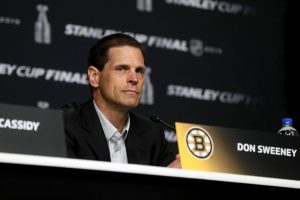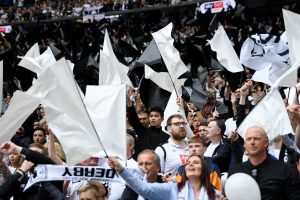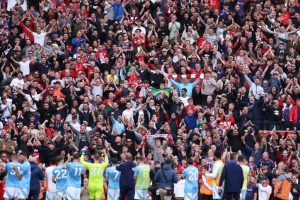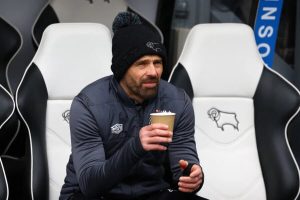
In light of the Mariners’ difficulties, the Braves’ player trade appears more doubtful.

On June 29, the Braves’ sensational leadoff batter wasted little time. With a 1-1 count in the bottom of the first inning, Pirates rookie prodigy Paul Skenes threw a 98-mph fastball up in the strike zone.
Jarred Kelenic did not miss it.
Kelenic, 24, twisted his hips and pulled a reckless four-seamer 367 feet over the right-field wall at Atlanta’s Truist Park. He put an early exclamation point in the Braves’ otherwise unremarkable 2-1 victory.
“Kelenic turns on this…” He sends it to the ‘chop house,’ greeting Paul Skenes somewhat brutally!” exclaimed Braves play-by-play announcer Brandon Gaudin. “It’s 1-0 Atlanta!”
If Gaudin thought Skenes was upset, consider Mariners fans.
After all, Kelenic, who was previously considered a franchise cornerstone with center fielder Julio Rodriguez, should most likely remain in Seattle. Last summer, he was moved to Atlanta along with Marco Gonzales and Evan White for minor-league pitcher Cole Phillips (the Mariners’ No. 18 prospect, according to MLB) and 27-year-old reliever Jackson Kowar.
To save money, the Mariners handed away Kelenic (and more).
They are now suffering the price.
In 76 games and 270 plate appearances for Atlanta, the 6-foot-1 lefty has slashed.271/.315/.450, with 10 home runs and 29 RBIs. Some could argue that Kelenic’s success has been aided by favorable circumstances, as the Braves’ big bats removed pressure on the former top prospect.
Despite losing MVP Ronald Acuña Jr. to a ruptured ACL, Kelenic had a hot June, hitting.304/.356/.544. Kelenic has thrived as the Braves’ leadoff hitter, posting a.312/.350/.559 slash line with six home runs and 14 RBI while sitting atop Atlanta’s order.
That does not imply Kelenic has succeeded in the shadow of more roaring bats. Quite the reverse.
Oh, and speaking of the opposite, meet the Mariners.
After losing regulars Kelenic, Teoscar Hernández, and Eugenio Suárez last offseason, Seattle’s retooled offense has struggled through a three-month rut. Prior to Tuesday’s games, the Mariners led the MLB in strikeouts (950) and strikeout rate (28.2%), but placed last in hitting average (.217). Their 3.8 runs per game ranked 27th, ahead of three clubs (the Athletics, Marlins, and White Sox) with a combined record of 92-183.
The truth is that Seattle’s sole hope for a trade deadline license is a good starting rotation and an atypically middling division.
Instead, the Mariners (49-43), who led the Astros by two games in a winnable AL West, are buyers looking for hitters.
In an ideal scenario, they’d sign a versatile and rising outfielder with plenty of pop and several years of club control.
Someone like Kelenic?
Instead, they will probably overpay for other accessible solutions. Meanwhile, Kelenic had the highest hitting average (.271), slugging percentage (.450), OPS (.765), batting average on balls in play (.356), line-drive percentage (30.6%), and wRC+ (113) among all Mariners. Kelenic has kept the Braves (50-39 as of Tuesday) afloat in the absence of Acuña and Michael Harris II, who are both sidelined.
Plus, Kelenic is not the only departee who has succeeded outside Seattle. The 31-year-old Hernández — who the Mariners let walk last offseason — was slashing .259/.319/.483 for the Dodgers, with more home runs (19) and RBI (60) than any Mariner. And Jose Caballero — who was shipped to Tampa Bay for outfielder Luke Raley — leads the American League with 24 stolen bases and has been far superior to his replacement, Jorge Polanco.
But Kelenic’s success (so far) must sting the most, a prospective poster child for this organization’s difficulty in developing position players. Hernández, at most, was a booming veteran bat — a short-term solution. Kelenic may be a mammoth missed opportunity.
That loss is exacerbated by Seattle’s offensive difficulties. The Mariners have had underperforming returners (Julio Rodríguez, Ty France, J.P. Crawford, Cal Raleigh, Dylan Moore, Dominic Canzone), underwhelming additions (Polanco, Mitch Haniger, Mitch Garver, Luis Urías, Seby Zavala), and under-ripe prospects (Ryan Bliss, Jonatan Clase, Tyler Locklear). Raley (.252/.295/.443) and third baseman Josh Rojas (.254/.330/.375) are the only possible outliers. Brant Brown, the offensive coordinator, was fired in May, but the bleeding continued.
Raley has become a fan favorite, but Seattle still lacks a league-average corner outfielder. The 33-year-old Haniger (.209/.283/.341, with eight homers and 34 RBI) and the 26-year-old Canzone (.209/.288/.388, with seven homers and 44 strikeouts) have failed to hit that goal both individually and collectively. Jerry Dipoto, president of baseball operations, and Justin Hollander, general manager, must now trade premium prospects to make up for prior mistakes.
But, while Kelenic’s simultaneous spike seems visually foreboding, there are several limitations. Kelenic’s relationship with the Mariners was strained at times, and there’s no assurance he’d have had the same success in Seattle again. And, considering his career splits in the second half (.209/.272/.378), Kelenic has yet to demonstrate that this is more than a proverbial flash in the pan.
It is probable that if he had stayed, Kelenic would have continued to stall.
But would a 24-year-old with tremendous potential, positional versatility, and an impending prime have been preferable to the Mariners’ current options?
The answer seemed obvious.







